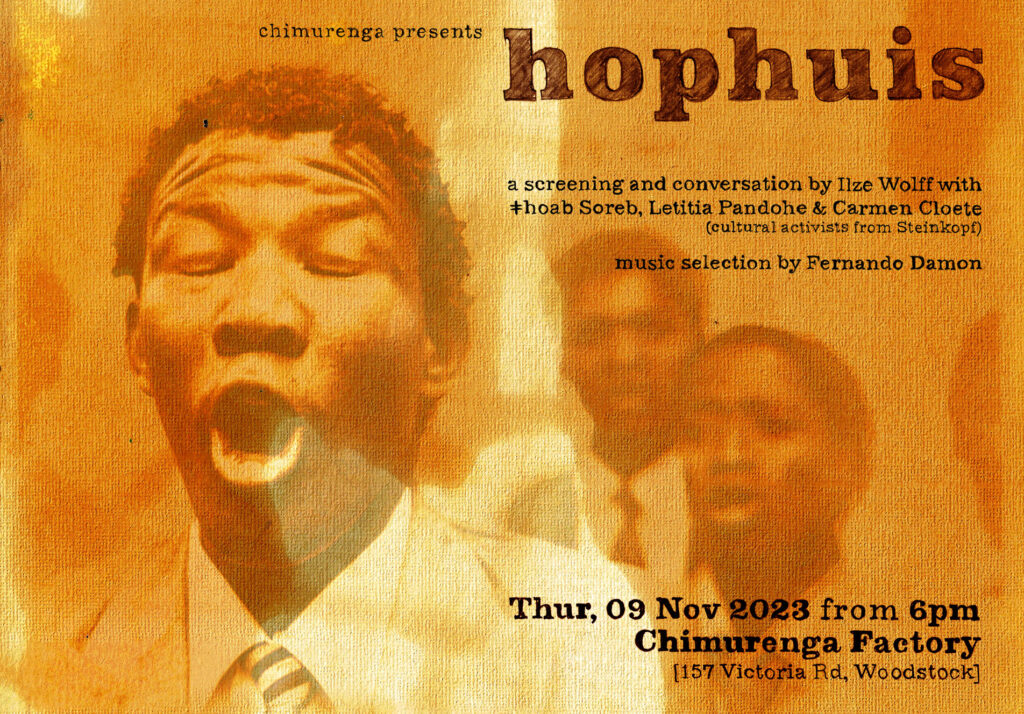
The film and pumplet publication Hophuis (both directed by Ilze Wolff) document a series of journeys and activations at the Steinkopf Community Centre in Namaqualand in the Northern Cape. The town of Steinkopf is situated in what was declared a “Coloured Reserve” by the apartheid government in 1948 – previously Kookfontein, it was renamed by German missionaries who settled there in the 18th century.
Along with a new name, the missionaries brought what James Baldwin referred to as “theological terror”, warning of eternal damnation for all those who followed indigenous spiritual practices. Dance and song, a core part of the spirituality of the Nama, were prohibited. Many of these cultural practices, along with the Nama language, remain treasured by community members and a few enthusiasts, but are otherwise forgotten.
Steinkopf was also witness to the early 20th century diamond and copper extraction by Anglo American – De Beers. By 1975, as diamond extracts began to dwindle, the company proposed a “community centre” for Steinkopf. A Chairman Fund was established and the mining executives reached out to the University of Cape Town’s Urban Problems Research Unit to provide architectural services. The funds provided by Anglo American – De Beers were insufficient to pay for the building, prompting the community to raise the rest of the money.
Finally, instruction to implement the project was received on 12 September 1977, the day the world learned of the killing of Black Consciousness leader, Stephen Bantu Biko.
In 1973, Biko had published his landmark essay “Black Consciousness and the Quest for a True Humanity” in the edited volume Black Theology: the South African Voice, calling for a re-examining of Christianity in light of the spiritual destruction of Africans at the hands of missionaries. Hophuis echoes the calls of Biko, Baldwin, and others for the re-insertion of dance, song, and language as practices of liberation. It also asks us to consider this unsung building in Steinkopf as a ruin and a potential site of freedom, both.
